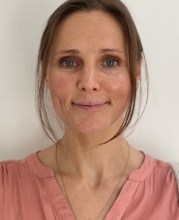
Elisabeth Taudorf graduated as a medical doctor in 2006 and has worked in internal medicine, rheumatology, gastro-surgery, general medicine, and oncology. From 2011, she began focusing on both research and clinical aspects of Dermatology and obtained her Specialist Degree in Dermato-Venerology in 2021.
As a research assistant and PhD student at Bispebjerg University Hospital she investigated laser-assisted topical drug delivery, and in 2016, she defended her PhD thesis: “Laser-assisted Delivery of Topical Methotrexate”. In 2017, she began her specialist training in Dermato-Venerology at Roskilde University Hospital and has continued doing part-time research with focus on various aspects of laser and light-based devices in dermatology of which several projects are now done in a proud collaboration with Section for Biostatistics and Evidence-Based Research, the Parker Institute. Elisabeth’s co-affiliation with Section for Biostatistics and Evidence-Based Research, the Parker Institute constitutes a valuable collaboration with focus on evidence-based dermatology and clinical epidemiology in general.
Specific research topics include designing and reporting on pragmatic and rigorously performed randomised trials that are not standard (i.e. two-arm, parallel group) randomised trials. The emphasis is on appropriate causal inference from within-person randomised trials. Within person trials are used for conditions that can affect two or more body sites and these designs are useful and efficient because the comparisons between interventions are within people; such trials are frequently applied in dermatology. In contrast to a parallel group randomised trial, everyone in a “within person” trial (incl. crossover studies), receives interventions but at randomised body sites or in a random order. In this way, each participant acts as his or her own control. The statistical analysis of within-person and crossover trial designs should be based on paired data (i.e., the estimation approaches need more advance approaches to account for the correlation of repeated measurements in the same individual).
Elisabeth has published 12 first authorships, and 8 co-authorships. She is an ongoing lecturer nationally and internationally.
